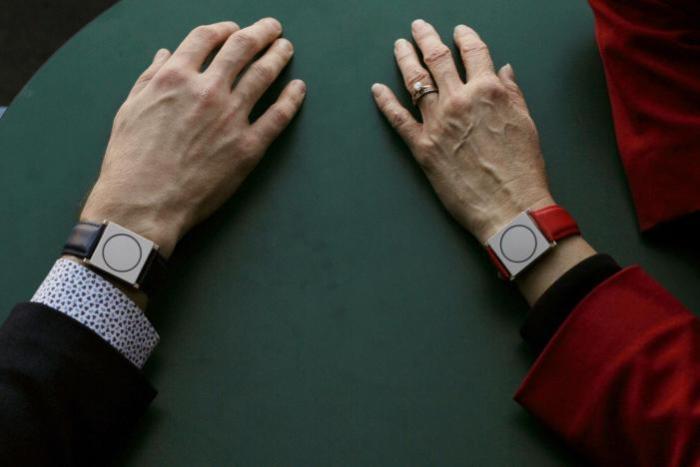Tech in Wearable Sensors Can Predict Sickness Before You Even Feel the Symptoms
After revolutionizing the fitness industry, wearable sensors will be able to predict imminent sicknesses and change the way medicine and healthcare sectors operate.

By monitoring heart rate, physical activity, skin temperature and other variables, already existing wearable sensors can predict the onset of infection, inflammation and even insulin resistance, a new study says.
The study, carried out by researchers at the Stanford University School of Medicine, collected data on weight, oxygen levels, skin temperature, sleep patterns and more from 60 people who wore between one and eight commercially available wearable devices. The team collected nearly 2 billion measurements from the biosensor devices at a rate of 250,000 per day, along with data of the participants' blood chemistry and gene expression obtained from periodic laboratory tests.
"I was very impressed with all the data that was collected," said Eric Topol, MD, professor of genomics at the Scripps Research Institute, who was not involved in the study. "There's a lot here—a lot of sensors and a lot of different data on each person."
Using this vast sample of data, the researchers were able to establish a baseline range of values for each person. By looking for deviations of these parameters from the normal range, they discovered it was possible to establish a correlation between patterns of deviation and the onset of particular health problems.
The deviations in the readings, caused by environmental conditions, illness or other factors that affect health, are picked up by algorithms which could change the way clinical diagnostics and research are carried out, states the study report which was published in PLOS Biology on January 12.
Real-world applications of the research
Senior study author Dr. Michael Snyder, director of the Center for Genomics and Personalized Medicine at Stanford University in California, has experienced first-hand the possibilities of using wearable devices to predict health issues.
One of the participants in the study, Snyder was wearing seven biosensors when he took a family vacation last year. On a long flight to Norway, he noticed that his oxygen levels had dropped while his heart rate had spiked. While this was normal at the beginning of a flight, the values did not return to baseline even after he landed in Norway. Snyder soon developed a fever and other signs of illness, something that didn't entirely surprise him.
Snyder suspected the presence of Lyme disease transmitted by a tick bite as he had spent time in rural Massachusetts a couple of weeks earlier. He obtained antibiotics for the infection from a doctor and later tests confirmed his diagnosis of Lyme disease.
The fact that the wearables picked up the infection before any symptoms manifested impressed Snyder. "Wearables helped make the initial diagnosis," he said.
The future of wearables in healthcare
Currently, people only have their blood pressure and body temperature measured once every year or two during routine check-ups with their doctors. However, with the implementation of wearable devices as health-monitors, the researchers foresee a future where human health is continuously monitored.
Already, consumers have purchased millions of wearable devices, including more than 50 million smart watches and 20 million other fitness monitors. Most monitors are used to track activity, but they could easily be adjusted to more directly track health measures, Snyder said.
With this approach, automatic analysis of a person's biological data could be used to spot patterns of deviation from the baseline and predict the onset of illness, providing an advanced opportunity for intervention, prevention, or cure.





























